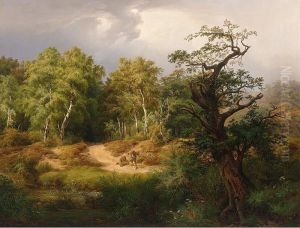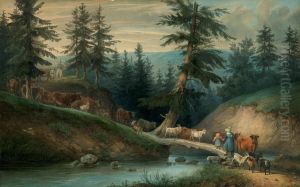Joseph Friedrich Ehemant Paintings
Joseph Friedrich Ehemant was a German artist born in 1744, a period that saw significant developments in the art world amidst the broader context of the Enlightenment. His life and career unfolded during a time when Europe was experiencing dramatic changes in thought, politics, and society, which inevitably influenced the arts. Ehemant's contributions to the art world, although not as widely recognized as some of his contemporaries, were nonetheless significant for their unique qualities and the influence they had on the artistic movements of his time and beyond.
Joseph Friedrich Ehemant's artistic journey was marked by his exploration of various mediums, but he is primarily remembered for his work as a painter and engraver. His style was reflective of the transition between Rococo, with its emphasis on lightness, grace, and beauty, and Neoclassicism, which sought to return to the simplicity and purity of the arts of Rome and ancient Greece. Ehemant's artworks often depicted classical themes, landscapes, and portraits, embodying the ideals of balance, harmony, and moral virtue that were celebrated by Neoclassicism.
Despite the scarcity of detailed records about his personal life and professional endeavors, Ehemant's surviving works offer a glimpse into his artistic vision and technical skill. He was known for his meticulous attention to detail, a characteristic that allowed his works to stand out for their realism and depth. His engravings, in particular, were highly regarded for their precision and ability to capture the essence of the subjects they portrayed.
Joseph Friedrich Ehemant's career unfolded during a period of great artistic innovation and debate, and his works contribute to our understanding of the evolution of European art at the cusp of the modern era. He passed away in 1799, but his artistic legacy continues to be studied and appreciated by art historians and enthusiasts alike. Through his contributions to painting and engraving, Ehemant remains a noteworthy figure in the history of German art, exemplifying the transition from the ornate styles of the 18th century to the more restrained and classical approach that would dominate the following century.


